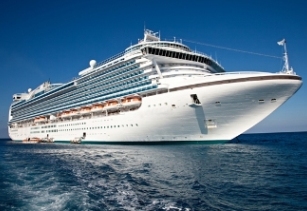Cruise Lines International Association (CLIA) has released the 2018 State of the Cruise Industry Outlook, offering an in-depth look at the cruise sector?s overall global economic impact as well as the trends impacting cruise in 2018.
The data shows that cruise travel is steadily on the rise with a projected 27.2 million passengers expected to set sail in 2018. In 2017, an estimated 25.8 million passengers cruised compared to 24.7 million passengers in 2016, an increase of 20.5% over five years from 2011-2016.
To meet ongoing demand, more ships are scheduled to set sail in 2018. CLIA Cruise Lines are scheduled to debut 27 new ocean, river and specialty ships this coming year.
Cindy D?Aoust, president and CEO for the association, said: ?It is without question that the cruise industry continues on a growth trajectory, gaining in consumer interest and creating a positive impact on the global economy. The 2018 State of the Cruise Industry Outlook is a way for us to keep a finger on the pulse of the global cruise industry and its impact on the global economy and identify new travel trends that will influence cruise travel in the future.?
As part of the report the organisation has forecast the top cruise travel trends for the coming year.
These include a sign that all budgets will cruise. The soon to be released, 2018 Cruise Travel Report found that almost all income brackets are cruising and that 33 % of the cruisers surveyed who have taken a cruise within the past three years have a household income of less than ?60,000. While the data shows cruising does skew a bit more to the affluent consumer than other types of holidays, the report indicates almost all levels of income enjoy cruise holidays.
The next evolution of experiential travel will see travellers seeking ?transformational? experiences; from cultural immersion and voluntourism to extreme adventures, those returning from a cruise hope to achieve a shift in perspective and a sense of accomplishment.
In the coming year there will be an even greater focus on sustainable tourism and travellers can participate in sustainable practices both onboard and off, from recycling and waste management to popular voluntourism initiatives.
River and small ship cruising continues to gain traction among travellers, specifically amongst Millennials. In addition multigenerational cruising is projected to increase in popularity, most notably ?skip-generation? trips - with grandparents and grandchildren travelling together without their parents.
The coming year is projected to see an increase in popularity of colder climate destinations including the Baltics, Canada, Alaska, and Antarctica and with it an array of unique excursion options, from penguin watching to ice fishing, to draw both new and repeat cruise travellers.
With more travellers seeking health and wellness trips, the cruise industry is responding to this with more services and experiences for the mind and body, such as onboard wellness seminars led by popular health experts, custom fitness programs, stress management and spa services.
The coming year will see a rise in traveller-friendly onboard technologies. Several cruise lines are introducing wearable technology so as to provide a personalised and seamless experience for guests whilst onboard; from turning the lights on as a cruiser approaches their cabin to acting as a security agent.
Finally it?s also noted that travel agents continue to see a steady demand from consumers thanks to their ability to effectively plan holidays, with an appreciation from clients for their valued expertise and affordability.
Full findings from the report can be found at cruising.org/about-the-industry/research











